This week, there were a lot of changes to major institutions that affect public health and science.
On Monday, Trump signed an executive order directing the United States to exit the World Health Organization. Withdrawing from the WHO impacts global health security, increasing risks for all nations and weakening collective efforts to fight infections.
Also on Monday, the president signed an order withdrawing the United States from the Paris Agreement under the United Nations Framework Convention on Climate Change. On Thursday, billionaire Michael Bloomberg announced that his foundation would fund 22% of what the United States previously provided to the UN climate change agency.
Tuesday, The US Department of Health and Human Services announced that federal health agencies including the NIH, CDC and FDA should pause all external communications, including health advisories, weekly scientific reports, updates to websites and social media posts at least until February 1. Robert Kennedy Jr’s confirmation hearing is scheduled for January 29.
Wednesday, The National Institutes of Health (NIH) cancelled all meetings until at least February 1. NIH grant funding review panels were cancelled which essentially halts funding for scientific research from the NIH. In addition, there is a ban on travel which affects scientists’ ability to present their work. The NIH Clinical Center can no longer recruit patients into clinical trials because of cancelled meetings and silencing information on clinical trials.
On Thursday, for the first time in 60 years, the CDC did not publish its weekly Morbidity and Mortality Weekly Report (MMWR), including three updates on the H5N1 Avian Flu outbreak.
SARS-CoV-2 and Other Respiratory Viruses
According to the CDC, overall respiratory illness is still HIGH across the United States as of 1/24/25. COVID levels are now MODERATE nationally, but Influenza levels and emergency room visits are VERY HIGH. RSV levels are moderate and are decreasing.
JP Weiland predicts that there are 375,000 new COVID infections daily in America and that every 1 in 89 people is currently infected with COVID, with higher levels seen in the midwest. Many people are sick with the Flu now and the majority of emergency department visits are due to Influenza A.
SARS-CoV-2 wastewater levels per the CDC
From: https://www.cdc.gov/nwss/rv/COVID19-nationaltrend.html
Per Sara Anne Willette, SARS-CoV-2 wastewater levels have not been reported by the CDC’s NWSS since January 19th, so her US Composite Wastewater Data map is limited to mostly WastewaterSCAN data.
Influenza A levels are very high now. Flu shots are still available.
From: https://data.wastewaterscan.org/
Acute COVID infections, General COVID info
Last week, WHO epidemiologist Maria Van Kerkhove wrote an article warning “Don’t pretend COVID-19 didn’t happen.” We can learn a lot about how to prepare for future pandemics from the COVID pandemic. Millions of people died from SARS-CoV-2 and many people continue to be reinfected as the virus continues to evolve. Worldwide, vaccine uptake has been very low for high risk individuals over age 60 and even for health care workers. Dr. Van Kerkhove says that we should take what we have learned from the COVID pandemic to help us prepare against future disease outbreaks.
A study from Boston University explored how acute SARS-CoV-2 infection alters tryptophan metabolism, leading to increased production of prothrombotic metabolites like kynurenine (Kyn) in mice and humans. It demonstrates that these changes activate the aryl hydrocarbon receptor (AHR) and tissue factor (TF) pathways in endothelial cells, contributing to clotting complications observed in COVID-19 patients. Targeting the AHR and IDO-1 enzymes shows potential for stopping the prothrombotic effects of acute COVID infection.
From: https://www.biorxiv.org/content/10.1101/2025.01.17.633602v1.full.pdf
Pediatrics
A group from Italy looked at blood immune profiles of 34 children with Long COVID, 32 with acute COVID infection, 27 with MIS-C (Multisystem Inflammatory Syndrome in Children), and 19 healthy controls. They found that Long COVID in children has a distinct blood protein signature reflecting increased general inflammation and endothelial cell inflammation as seen by higher levels of CXCL11, CXCL1, CXCL5, CXCL6, CXCL8, TNFSF11, OSM, and STAMBP1a. A machine learning model demonstrated high accuracy in distinguishing Long COVID cases- the blood proteomic profile was able to identify Long COVID with an accuracy of 0.93, specificity of 0.86 and sensitivity of 0.97.
From: https://www.nature.com/articles/s41390-025-03837-0
Vaccines
A study from the Bloom lab found that infants who had no prior exposure to COVID or vaccination made antibodies to the spike protein's N-terminal domain (NTD) when infected by the XBB variant. People who had prior exposure to the original Wuhan virus variant made antibodies to the receptor-binding domain (RBD) of the virus. When the infants were vaccinated after their XBB infection, they started to make more antibodies to the RBD instead of the NTD, reflecting how exposure history shapes immune responses and influences viral evolution.
A study that I reported on two weeks ago of 1,300 consecutive Long COVID patients at Northwestern analyzed whether vaccination prior to contracting COVID infection impacts neurological symptoms of Long COVID. They found that vaccination prior to infection did not appear to alter cognitive and neurological symptoms of Long COVID, though pre-existing vulnerabilities may influence its development.
Another study from Stanford looked at the effect of vaccination on Long COVID symptoms in two different cohorts. Although some people improved and some worsened after vaccination, most individuals with Long COVID reported no change in their symptoms after vaccination “regardless of age, race/ethnicity, sex, and the type of vaccine received (mRNA, viral vector, or protein subunit vaccines).” Vaccination after someone already has Long COVID may not decrease symptoms, but vaccination can prevent reinfections which helps decrease the risk of getting Long COVID.
Antiviral treatments
Researchers from UCSF and the Gladstone Institute discovered a new class of SARS-CoV-2 main protease (MPro) inhibitors. AVI-4516 and AVI-4773 show broad antiviral activity and are much better at reducing SARS-CoV-2 viral loads compared to Paxlovid in both cell studies and mouse studies. AVI-4516 and AVI-4773 show promise for combating emerging SARS-CoV-2 variants and other coronaviruses, with excellent tissue distribution in the brain and other tissues in mice.
Japanese company Shionogi, which makes the antiviral Ensitrelvir, will receive $375 million from the US Administration for Strategic Preparedness and Response (ASPR) and BARDA to develop a long-acting formulation of its SARS-CoV-2 protease inhibitor drug S-892216 which could be used as pre-exposure prophylaxis for immunocompromised people to protect them from COVID infections.
Long COVID
Finding a reliable biomarker for Long COVID is crucial for improving diagnosis, understanding the disease, and accelerating drug development. Belgian immunologist Johan Van Weyenbergh’s lab identified promising blood RNA biomarkers for Long COVID- antisense SARS-CoV-2 and FYN RNA- which show potential for detecting viral persistence in blood with a 94% sensitivity rate. ORF1ab viral RNA was also found in whole blood from some of the people with Long COVID, indicating possible ongoing viral replication. The potential Long COVID biomarkers require further validation through larger, independent studies.
The choroid plexus is a network of blood vessels in the brain that produces cerebrospinal fluid and allows immune cells to cross into the brain. A study of 129 people with Long COVID shows that an enlarged choroid plexus volume was associated with cognitive impairments and brain changes in people with Long COVID. Specifically, “ChP [choroid plexus] enlargement was associated with cognitive dysfunction, grey matter volume reduction in frontal and subcortical areas, white matter integrity and diffusivity changes and functional connectivity changes.”
A systematic review of 31 studies on brain executive function deficits in people with Long COVID shows persistent cognitive impairments, particularly in working memory, task-switching, and inhibitory control. These deficits are linked to structural and functional brain changes in the frontal and cerebellar regions. Understanding these impairments could improve treatment and interventions for those affected by Long COVID.
In some Long COVID patients with neurologic symptoms, autoantibodies (AAbs) to muscarinic cholinergic receptors (CHRMs) disrupt cholinergic signaling, which affects cognition, sensory processing, and movement. AAbs can breach the blood-brain barrier and interact with CHRMs, leading to inflammation and impaired neurotransmitter function. Therapeutic immunoadsorption (blood filtration) and monoclonal antibodies may neutralize these AAbs and alleviate neurologic symptoms in this group of patients with Long COVID.
Myalgic Encephalomyelitis/ Chronic Fatigue Syndrome (ME/CFS) is a chronic debilitating disease that often causes severe fatigue, post-exertional malaise, orthostatic intolerance, and cognitive impairment. The RECOVER-Adult study of more than 13,000 adults shows that the risk of ME/CFS is 15 times higher after COVID infection than in people who did not have a prior COVID infection. Most people (89%) with ME/CFS after COVID infection also met the RECOVER criteria for Long COVID.
A comprehensive meta-analysis of 429 studies conducted between 2021 and 2024 found that approximately 36% of individuals diagnosed with COVID infection experienced Long COVID, with prevalence varying by region—51% in South America, 39% in Europe, 35% in Asia, and 30% in North America. The most common subtypes included respiratory issues (20%), general fatigue (20%), psychological symptoms (18%), neurological problems (16%), and dermatological conditions (12%). Key risk factors identified for development of Long COVID were being unvaccinated, having pre-existing health conditions, and female sex.
A retrospective study looked at what increased the risk of Long COVID in essential workers in New York. Reinfections with SARS-CoV-2 increased the risk of Long COVID by 41%. Severe COVID infections were associated with 3x the risk of Long COVID and being unvaccinated increased the risk 3.3 fold.
H5N1
Last week, the CDC recommended rapid subtype testing for H5 in people hospitalized with Influenza A, especially for those in the ICU. This will help to identify people with H5N1 Avian Flu more quickly.
On January 17, HHS granted $590 million to Moderna to speed the creation of mRNA vaccines targeting pandemic flu threats like H5N1. The funds will help Moderna develop an H5N1 Avian flu vaccine tailored to the strains found in cattle and poultry.
Other news:
This week, Cecile Richards died at age 67 of brain cancer. She was the daughter of Texas governor Ann Richards, deputy chief of staff to Nancy Pelosi and Planned Parenthood president 2006 to 2018. She was a force to be reckoned with who fought tirelessly for women’s rights.
Ziyad Al-Aly’s lab looked at 1,955,135 veterans with diabetes and compared the use of GLP-1 receptor agonists such as Ozempic to other diabetic medications. They found that GLP-1 RAs lowered the risk of 42 health conditions. “Compared to usual care, GLP-1RA use was associated with a reduced risk of substance use and psychotic disorders, seizures, neurocognitive disorders (including Alzheimer’s disease and dementia), coagulation disorders, cardiometabolic disorders, infectious illnesses and several respiratory conditions. There was an increased risk of gastrointestinal disorders, low blood pressure, syncope, arthritic disorders, nephrolithiasis, interstitial nephritis and drug-induced pancreatitis associated with GLP-1RA use compared to usual [diabetes] care.” These findings underscore the broad health effects of GLP-1RAs in addition to their use in diabetes and weight loss.
The FDA is requiring new warning labels regarding an increased risk of Guillain-Barre syndrome, a rare neurologic disorder that can cause temporary paralysis, with two RSV vaccines- Arexvy which is indicated for older adults and Abrysvo which is used in people over age 60 and in pregnant individuals to help protect infants from RSV.
An international, multicenter trial shows that antibiotic treatment for children aged 5 to 16 years with appendicitis was significantly riskier than having an appendectomy.
Very small microplastics < 20 μm in drinking water are dangerous because they are small enough to be absorbed through the human gastrointestinal system and are found in our blood and organs. A new study from France shows that tap water was found to have higher amounts of tiny microplastics than 8 of the 10 bottled water samples tested. “Although all the investigated samples of bottled water were stored in polyethylene terephthalate (PET) bottles, PET accounted only for a small percentage of identified microplastics (MPs) in most samples.” The authors recommend that fine microplastics < 20 μm should be measured and regulated.
Here is a new image of the Leo P galaxy located about 5 million light-years away from the James Webb Space Telescope. The young, massive stars look blue as compared to sun-like stars because they lack heavy elements.
From: https://www.stsci.edu/contents/media/images/2025/401/01JH0V3YAC020TJZQTPM337VAF
Have a great rest of your weekend,
Ruth Ann Crystal MD
LINKS and NOTES:
CDC Respiratory Illnesses Data Channel
This site is updated on Fridays.
https://www.cdc.gov/respiratory-viruses/data/index.html
CDC Respiratory viruses (COVID, Flu, RSV) Hospitalizations (for those states reporting): https://www.cdc.gov/resp-net/dashboard/index.html
Regional Respiratory Viruses from WastewaterSCAN:
12 states are not reported.
COVID news notes:
US Variant tracker: https://covid.cdc.gov/covid-data-tracker/#variant-proportions
Through 1/18/25.
XEC is dominant at 47%.
LP.8.1 is increasing, but is not doubling. In the last 6 weeks, LP.8.1 went from 6% to 10% and now to 15%.
CDC COVID data tracker: https://covid.cdc.gov/covid-data-tracker/index.html#datatracker-home
No new data since 1/11/25.
COVID Emergency Dept visits: https://covid.cdc.gov/covid-data-tracker/#ed-visits_all_ages_combined
Through 1/18/25
Walgreens positivity rate: https://www.walgreens.com/businesssolutions/covid-19-index.jsp
US Wastewater Monitoring:
CDC wastewater reporting: https://www.cdc.gov/nwss/rv/COVID19-nationaltrend.html
Through 1/18/25
CDC wastewater map: https://www.cdc.gov/nwss/rv/COVID19-currentlevels.html
National SARS-CoV-2 data from Sara Anne Willette: https://iowacovid19tracker.org/
US Composite Wastewater Data: NWSS & WastewaterSCAN
Wastewater SCAN: https://data.wastewaterscan.org/
SARS-CoV-2 in wastewater
California statewide view https://buff.ly/3YObiul
Santa Clara County wastewater: https://publichealth.santaclaracounty.gov/health-information/health-data/disease-data/covid-19/covid-19-wastewater
Palo Alto Sewer Shed through 1/21/25
Marin county: https://coronavirus.marinhhs.org/surveillance
Through 1/17/25
COVID deaths per week: https://covid.cdc.gov/covid-data-tracker/#trends_weeklydeaths_weeklypctdeaths_00
Through 1/11/25
JP Weiland: https://twitter.com/JPWeiland https://bsky.app/profile/jpweiland.bsky.social
JP Weiland Jan 24th update:
Despite the data freeze, wastewater was updated today, and now shows the predicted drop in rates that I've been talking about. Modeled to today:
375,000 new infections/day
~1 in 89 currently infected
Midwest still above other regions
1/22/25 Science: Trump hits NIH with ‘devastating’ freezes on meetings, travel, communications, and hiring https://buff.ly/40oC5yB
1/23/25 Nature: ‘Never seen anything like this’: Trump’s team halts NIH meetings and travel https://buff.ly/3EjUC7B
In an unprecedented move, research-grant reviews have been suspended indefinitely at the world’s largest public funder of biomedical research.
1/21/25 Reuters: Trump officials ask US health agencies (CDC, FDA, NIH) to pause external communications, Washington Post reports https://buff.ly/40umyxd
The White House: Withdrawing The United States From The World Health Organization https://buff.ly/40EsViC
PUTTING AMERICA FIRST IN INTERNATIONAL ENVIRONMENTAL AGREEMENTS (Paris Accord)
www.whitehouse.gov/presidential...
1/23/25 France 24: Bloomberg to fund UN climate agency after US exit from Paris accord https://buff.ly/3CiVMzP
MMWR: https://www.cdc.gov/mmwr/index.html
1/22/25
Michael Hoerger modeling: http://pmc19.com/data/, https://twitter.com/michael_hoerger
Canada wastewater https://health-infobase.canada.ca/wastewater/
UK:
UKHSA Dashboard: https://ukhsa-dashboard.data.gov.uk/
UK COVID PCR Test Positivity Map: https://jamestindall.info/skeuomorphology/ladb_covid/index.html
International
Acute COVID infections, General COVID info
1/16/25 Science by Maria Van Kerkhove: Don’t pretend COVID-19 didn’t happen https://buff.ly/40Ch3On
Annotated by Eric Topol MD
1/21/25 BioRxiV (Boston University): Tryptophan metabolism reprogramming contributes to the prothrombotic milieu in mice and humans infected with SARS-CoV-2 https://buff.ly/3PKccUK
SARS-CoV-2-infection upregulates kynurenine biogenesis in the liver and diminishes kynurenine catabolism in the lungs and kidneys.
An increase in kynurenine stimulates the AHR-TF axis in the microvasculature in COVID-19 patients, which is inhibited by pharmacological manipulation.
Pediatrics
1/24/25 Nature Pediatric Research: Distinct pro-inflammatory/pro-angiogenetic signatures distinguish children with Long COVID from controls https://buff.ly/3WxYyIk
A machine learning model demonstrated high accuracy in distinguishing Long COVID cases- the blood proteomic profile was able to identify Long COVID with an accuracy of 0.93, specificity of 0.86 and sensitivity of 0.97.
From: https://www.nature.com/articles/s41390-025-03837-0
1/20/25 BioRxiV (Bloom lab): SARS-CoV-2 neutralizing antibody specificities differ dramatically between recently infected infants and immune-imprinted individuals https://buff.ly/4h9G4pN
From: https://www.biorxiv.org/content/10.1101/2025.01.17.633612v1.full.pdf
Bloom lab thread https://buff.ly/40L7vRe
Vaccines
12/18/24 Vaccines (Stanford): Post-COVID-19 Vaccination and Long COVID: Insights from Patient-Reported Data https://buff.ly/42IBISn
Equal number of people improve and worsen after vaccination. Most have no change.
This concurs with part of the findings from the recent Northwestern article:
1/7/25 Brain Communications: Vaccination prior to SARS-CoV-2 infection does not affect the neurologic manifestations of long COVID https://buff.ly/3Wd04j0
Antiviral treatments
1/18/25 BioRxiV: Structure-based discovery of highly bioavailable, covalent, broad-spectrum coronavirus-MPro inhibitors with potent in vivo efficacy https://buff.ly/3Cfv2Qz
Researchers from UCSF and the Gladstone Institute discovered a new class of SARS-CoV-2 main protease (MPro) inhibitors. AVI-4516 and AVI-4773.
1/16/25 Shionogi Receives Award Through BARDA's Rapid Response Partnership Vehicle to Advance Long-Acting Formulation of S-892216, an Antiviral for COVID-19 Pre-Exposure Prophylaxis in At-Risk Populations https://buff.ly/40Dg7ZU
Long COVID
1/21/25 The Sick Times: Finding an accepted Long COVID biomarker will be complicated. This blood test could give us answers. https://buff.ly/3ClLAXb
“Last year, immunologist Johan Van Weyenbergh published a study in The Lancet: Microbe that identified a potential blood-based biomarker for Long COVID with 94% sensitivity. Van Weyenbergh’s team discovered SARS-CoV-2 RNA transcripts (Antisense SARS-CoV-2 and FYN RNA) in the blood cells of people with Long COVID. They also found a specific type of RNA, called ORF1ab RNA, which suggested there could also be ongoing viral replication of SARS-C0V-2 in people with the disease.”
1/15/25 Molecular Psychiatry: Choroid plexus volume is enlarged in long COVID and associated with cognitive and brain changes https://buff.ly/40ncJ3W
1/19/25 Heliyon from Cell Press: Executive Function Deficit in Patients with Long COVID Syndrome: A Systematic Review https://buff.ly/4jrr8Vu
1/21/25 J of Medicinal Chemistry: Strategic Inhibition of CHRM Autoantibodies: Molecular Insights and Therapeutic Potentials in Long COVID https://buff.ly/4jpJR3O
This study explores how autoantibodies (AAbs) targeting muscarinic cholinergic receptors (CHRMs) contribute to neurological symptoms in long COVID by disrupting cholinergic signaling, which affects cognition, sensory processing, and movement.
1/13/25 Journal of General Internal Medicine: Incidence and Prevalence of Post-COVID-19 Myalgic Encephalomyelitis: A Report from the Observational RECOVER-Adult Study https://buff.ly/3CbQqWS
Longitudinal observational cohort study of more than 13,000 people shows that 4.5% of people who had COVID later met the diagnostic criteria for ME/CFS, compared to 0.6% of people who did not have a prior COVID infection. Most people (89%) with ME/CFS after COVID infection also met the RECOVER criteria for Long COVID.
2/2025 The Lancet Regional Health - Americas: SARS-COV-2 re-infection and incidence of post-acute sequelae of COVID-19 (PASC) among essential workers in New York: a retrospective cohort study https://buff.ly/3E8a8mV
Reinfections with SARS-CoV-2 increased the risk of Long COVID by 41%. Severe COVID infections were associated with 3x the risk of Long COVID and being unvaccinated increased the risk 3.3 fold.
1/6/25 MedRxiV (Yale Public Health): Global Prevalence of Long COVID, its Subtypes and Risk factors: An Updated Systematic Review and Meta-Analysis https://buff.ly/4jjFes5
"Meta-analysis of 429 studies published from 2021-2024 estimated a pooled global long COVID prevalence of 36% in COVID-19 positive individuals."
H5N1
1/16/25 CDC Health Alert Network (HAN) - 00520 | Accelerated Subtyping of Influenza A in Hospitalized Patients https://buff.ly/4hgoSyD
1/21/25 CIDRAP: On January 17, HHS granted $590 million to Moderna to speed the creation of mRNA vaccines targeting pandemic flu threats. The funds will help Moderna develop an H5N1 Avian flu vaccine tailored to the strains found in cattle and poultry. https://buff.ly/4g6IKmD
Other news:
1/20/25 NBC: Cecile Richards, former Planned Parenthood president, dies at 67 of brain cancer https://buff.ly/40qs83r
1/20/25 Nature (Z. Al-Aly's lab): Mapping the effectiveness and risks of GLP-1 receptor agonists https://buff.ly/4jm6iqC
"Compared to usual care, GLP-1RA use was associated with a reduced risk of substance use and psychotic disorders, seizures, neurocognitive disorders (including Alzheimer’s disease and dementia), coagulation disorders, cardiometabolic disorders, infectious illnesses and several respiratory conditions. There was an increased risk of gastrointestinal disorders, hypotension, syncope, arthritic disorders, nephrolithiasis, interstitial nephritis and drug-induced pancreatitis associated with GLP-1RA use compared to usual care."
1/20/25 Fortune Well (Carolyn Barber MD): Huge Ozempic and GLP-1 drug study finds they may lower risk of 42 health conditions, including heart attacks and Alzheimer’s disease https://buff.ly/3WthwQd
1/8/25 CIDRAP: FDA requires Guillain-Barre label warnings for 2 RSV vaccines https://buff.ly/3PFPFIP
risk of Guillain-Barre syndrome, a rare neurologic disorder that can cause temporary paralysis.
2 RSV vaccines: Arexvy and Abrysvo
1/18/25 Lancet: Appendicectomy versus antibiotics for acute uncomplicated appendicitis in children: an open-label, international, multicentre, randomised, non-inferiority trial https://buff.ly/4ar3Fjb
Brain
1/15/25 Science: Inhaled xenon modulates microglia and ameliorates disease in mouse models of amyloidosis and tauopathy https://buff.ly/3E0bekU
Microplastics
1/15/25 PLOS Water: Majority of potable water microplastics are smaller than the 20 μm EU methodology limit for consumable water quality https://buff.ly/4akxqlO
h/t Eric Topol MD
1/14/25 Lina Khan, FTC https://x.com/linakhanFTC/status/1879325996811456788
1. Today @FTC published its second interim staff report on the 3 major pharmacy benefit managers. It finds these PBMs marked up several specialty generic drugs by thousands of percent, generating them more than $7.3 billion in extra revenue from 2017-22.
2. These markups of hundreds and thousands of percent affected drugs for cancer & other serious conditions.
The report found these PBMs reimbursed their affiliated pharmacies at a higher rate than they paid unaffiliated pharmacies on nearly every specialty generic drug examined.
1/16/25 The Leo P galaxy
“image from NASA’s James Webb Space Telescope shows a portion of the Leo P dwarf galaxy (stars at lower right represented in blue). Leo P is a star-forming galaxy located about 5 million light-years away in the constellation Leo.
From: https://www.stsci.edu/contents/media/images/2025/401/01JH0V3YAC020TJZQTPM337VAF
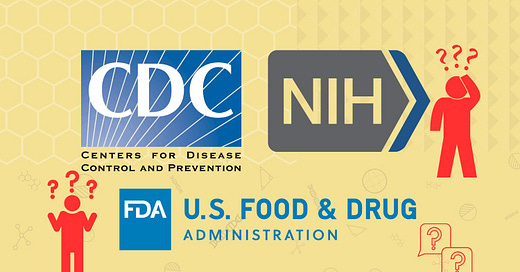




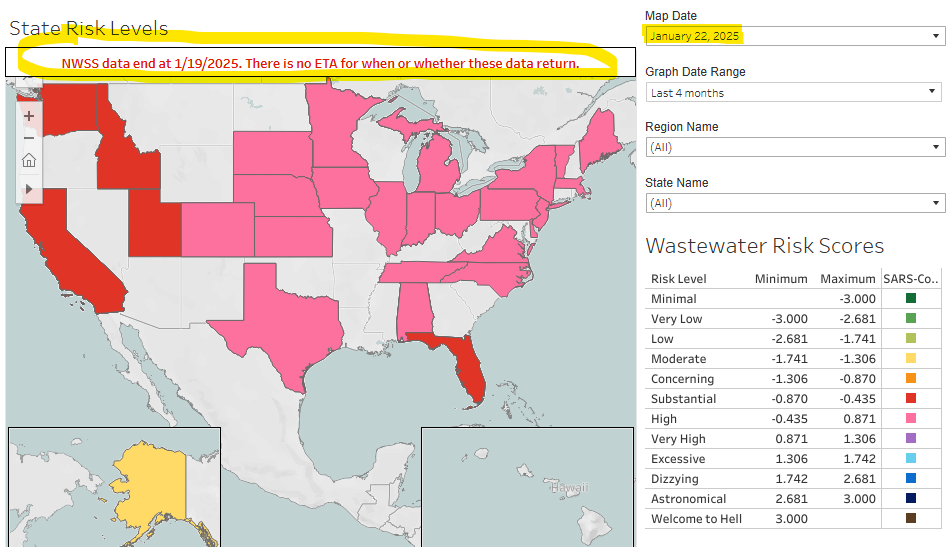

























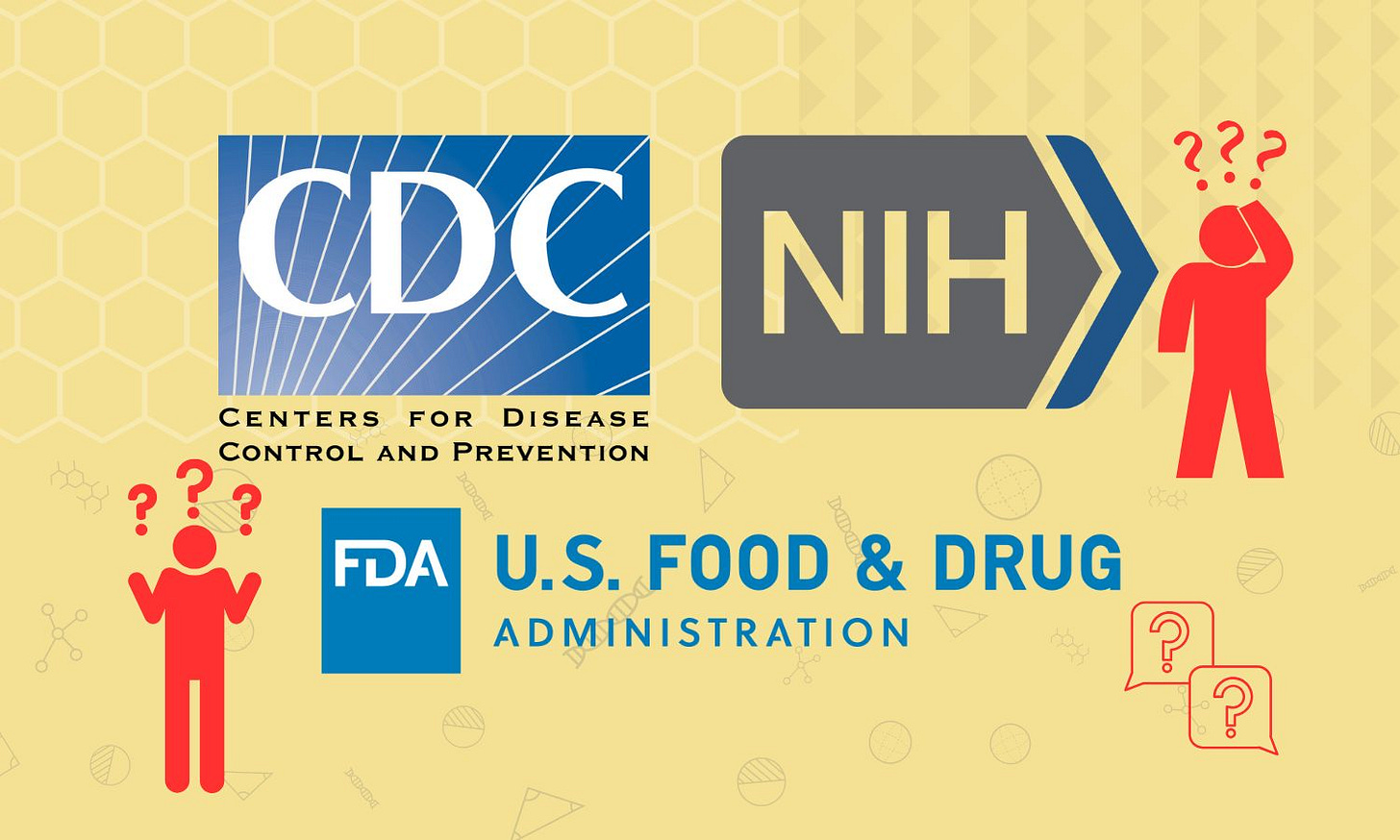
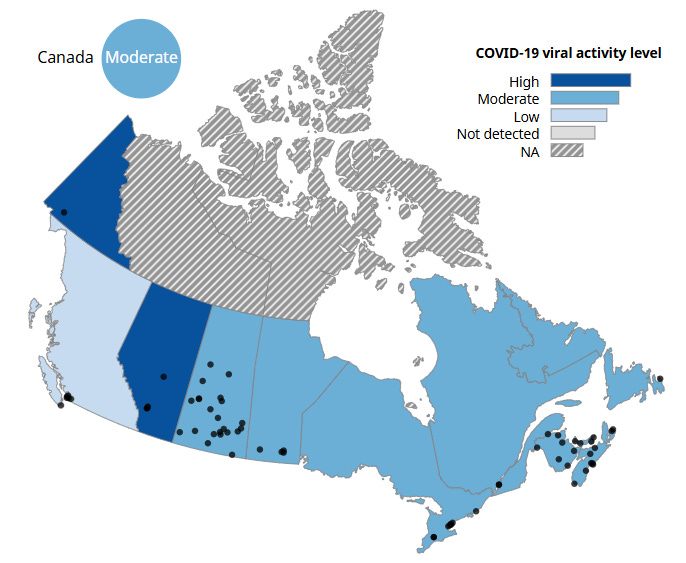



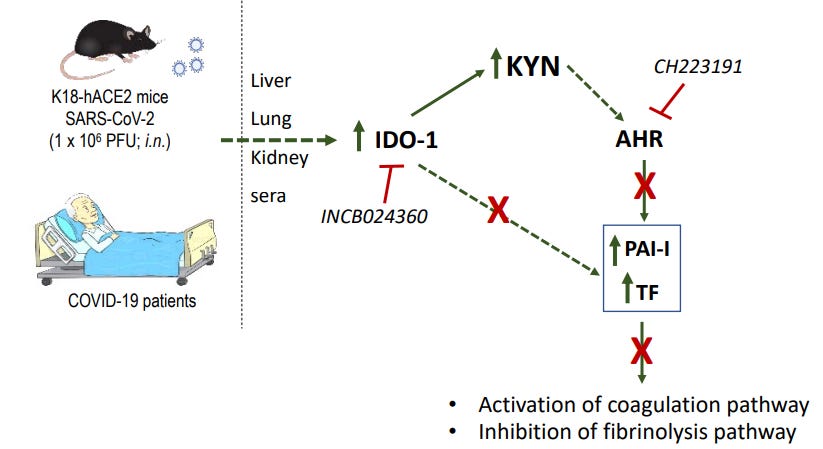






Thank you so much for this amazing summary of Covid and Long Covid information. Living with the disabling impact of Long Covid cognitive issues, having a place that puts together a comprehensive current update is so helpful. We often need to educate our own doctors on what is happening in the research and treatment world, as MDs are not reading about LC or being updated in the field.
Thank you for this weekly summary and coverage of this continuing pandemic. It is hard to lose sight of the continued threat when the peaks aren’t so high or when there are long lulls as more people continue to be reinfected and long covid cases rise. The rising number of chronic diseases as a result of covid reinfections within a broken healthcare system in the US does not bode well, especially with this new administration.